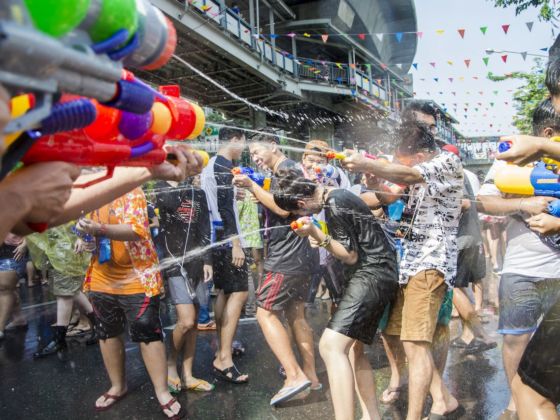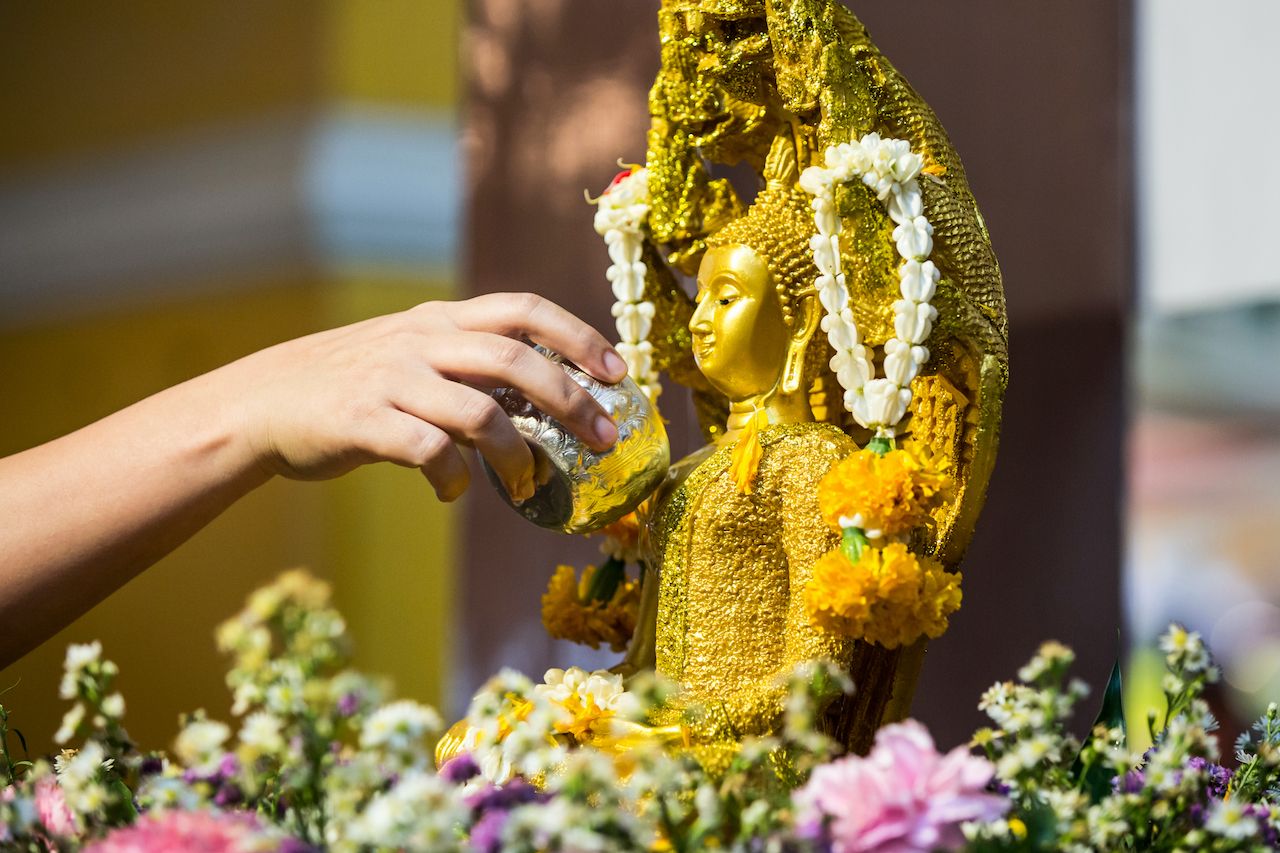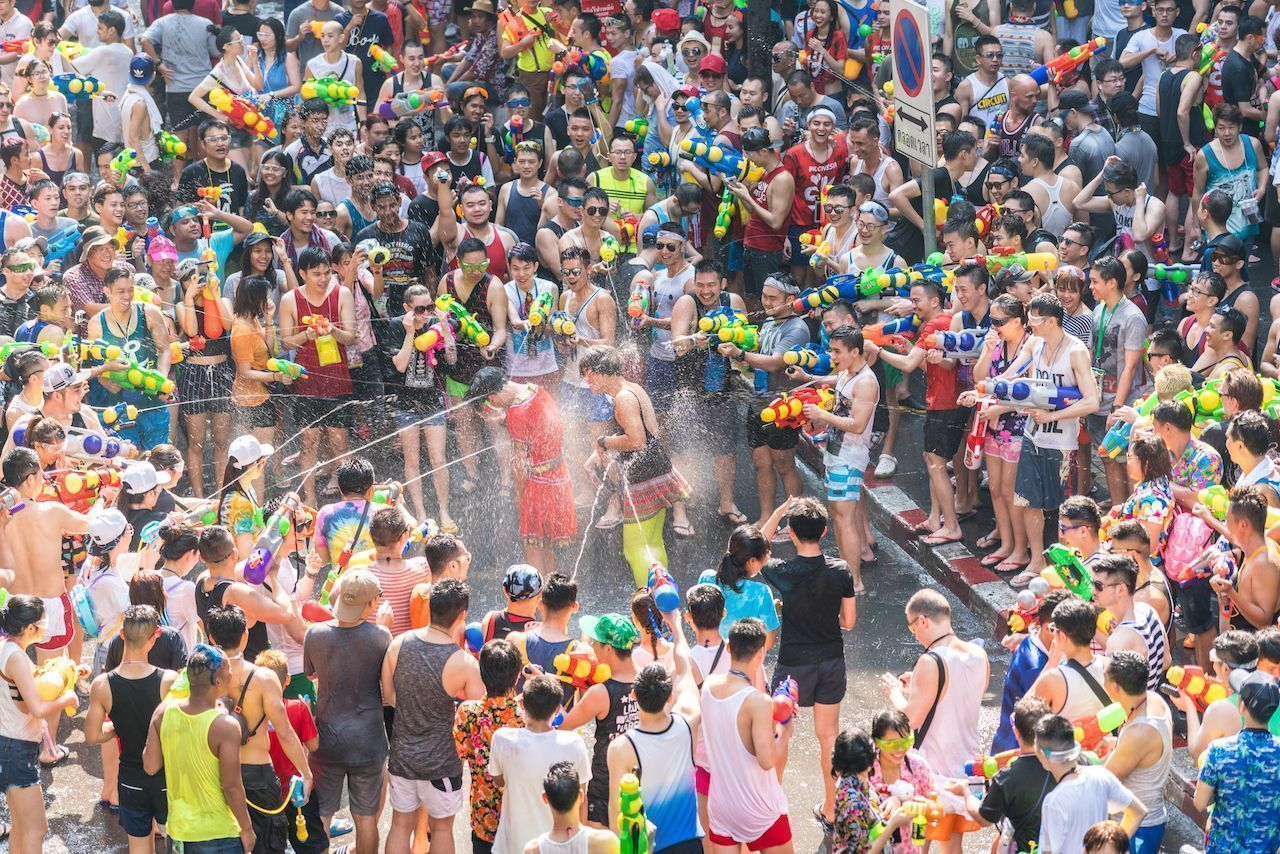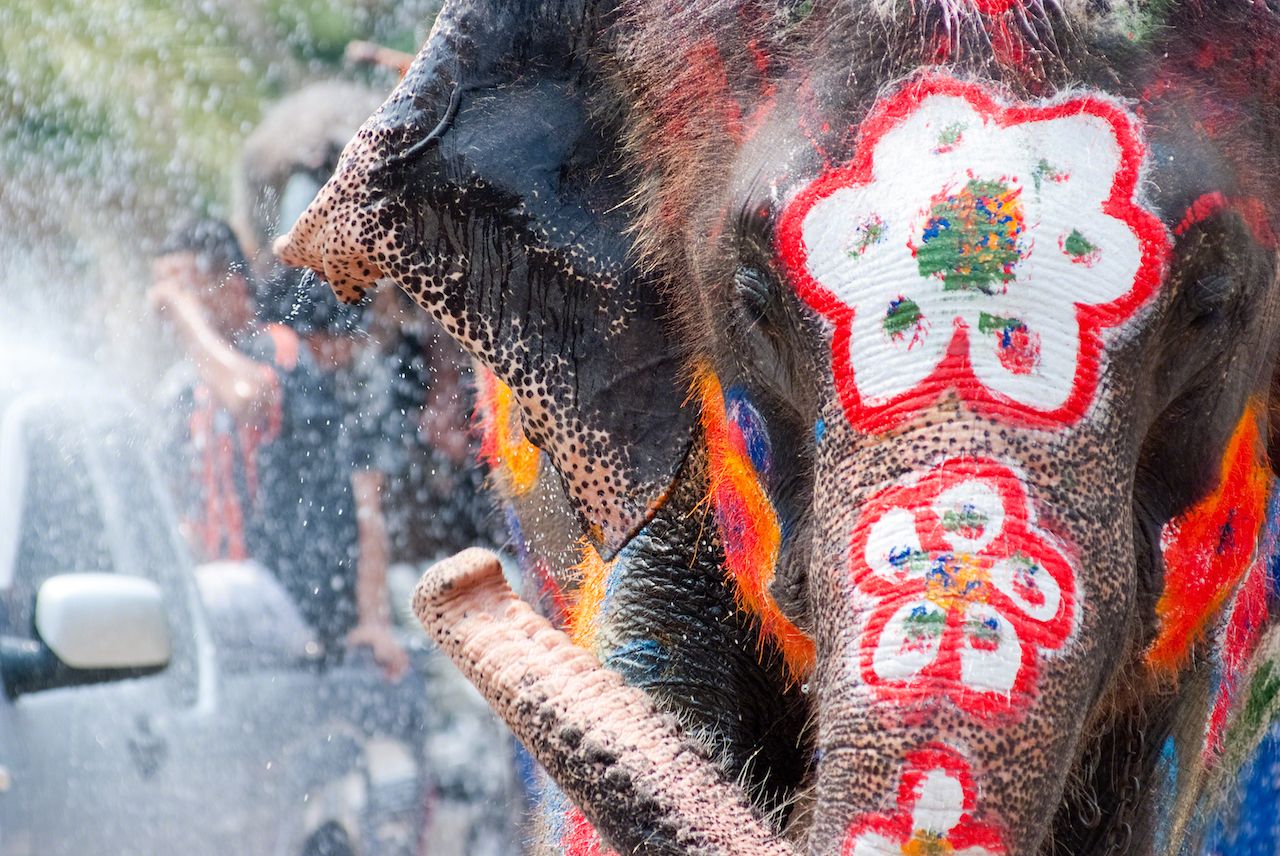Traditionally Songkran, or Thai New Year, was marked by the quiet practice of blessing Buddha statues, but today it has become a far more raucous affair — so much so that it’s often referred to as the world’s biggest water fight. Vast crowds of revelers, locals and tourists alike, line streets across Southeast Asia armed with buckets of water, hoses, and huge, brightly colored water pistols. This is no place for bystanders; if you’re outside, you’re fair game.
Rather than one geographically specific event, Songkran celebrations take place all over Thailand, as well as the neighboring countries of Cambodia, Laos, and Myanmar (plus Xishuangbanna in southwestern China and the Indian states of Arunachal Pradesh and Assam), so it pays to go prepared. Read on for everything you need to know about Songkran.



